Source: Nanfang Daily, September 10, 2012, Page A10
Written by: Cao Si
Translated by: Chen Zhiyong
"Let me Fight Cancer with You, Mum", a passage put out on Techno View of Guokr website on September 5, has received the most recommendations within a day since August 15.
The passage was edited and translated from “A New Treatment’s Tantalizing Promise Brings Heartbreaking Ups and Downs” in
The New York Times, which tells the story of a molecular biologist working on gene sequencing fighting cancer with his mother. It mentioned a new strategy to fight against cancer cells at the genetic level, thus revealing the promising prospects of a new treatment and a sad story with twists and turns.
Genomics is an issue that has been heatedly discussed. For years, many scientists have been devoted to deciphering the magic code of human diseases, and especially in the field of cancer diseases, genetic research is viewed as the key to making breakthroughs.
At the end of August, BGI Clinic, the first genetic testing and consultation clinic in South China, was founded in Shenzhen. Previously in Guangzhou, Yves-Jean Bignon, a French scientist, brought "oncogenetic consultation", the most important subject in the area, to SYSU Cancer Center and explored the possibility of taking the lead in establishing a center for oncogenetic diagnosis in South China.
The latest information shows that oncogenetic consultation has taken its first step in some departments of SYSU Cancer Centre. Can it prove to be effective in early warning, early screening and treatment and become a new weapon to fight against cancer?
The French Expert’s New Challenge in China
China is the only major country without oncogenetic consultation. It’s a new issue how to apply the research results of oncogenetics to clinical practice and provide consultation services.
Immediately after his flight landed in Guangzhou, the French doctor Yves-Jean Bignon headed to SYSU Cancer Center regardless of his tiredness. An important forum was awaiting him, its theme: oncogenetics.
Bignon has been studying oncogenetics for 11 years. He is Director of Centre Jean-Perrin, Clermont-Ferrand, France, which has a history of 24 years, one of the longest among oncogenetic research institutions. 24 years may not be long for many research institutions, but it is veteran in this new and promising area of oncogenetic research.
In the conference room on the 23rd floor of SYSU Cancer Centre, more than 30 experts had taken their seats, including Prof. Qian Chaonan, Assistant Director, Prof. Xie Xiaoming, Chair of Department of Breast Oncology and Prof. Pan Zhizhong, Chair of Department of Colorectal Surgery. BGI Shenzhen also sent its representative as a cooperative party.
As early as 2009, SYSU Cancer Centre had sent experts to Centre Jean-Perrin to study the “Next Generation Sequencing” programme, which was aimed to provide more effective prevention and detection of tumour for the younger generation of “families with a high risk of cancer”. Bignon made this visit in order to seek further cooperation between both sides.
After his PPT presentation, Bignon went on to say, “My family has been troubled by colon cancer for centuries and hardly any generation was spared. Later I put my family to the oncogenetic test and found that the excision of colorectal polyps that might bring about canceration beforehand could greatly reduce the incidence of cancer.”
Along with most cancer experts, Zhu Xiaofeng, Deputy Director of Experiment and Research Department of The State Key Laboratory of Oncology in South China, SYSU Cancer Center, agreed with Bignon on his view of “early discovery, early treatment”.
"What is most terrible about cancer is that,” Zhu Xiaofeng said, “if left unchecked, it will become out of control at the advanced stage. Cancer cells can invade many organs of the human body. Therefore, the medical profession turns its attention to early screening and treatment, and the screening of high risk groups is an effective public health measure. As a new technique for early cancer warning and screening, oncogenetic consultation is receiving increasing recognition in Europe and the US, and it is extensively used for early diagnosis of breast cancer and colorectal cancer.”
However, “China is the only major country without oncogenetic consultation.” At the end of his presentation, Bignon raised a question: How to apply the research results of oncogenetics to clinical practice and provide consultation services to the huge population of cancer patients in China is still a brand new subject.



